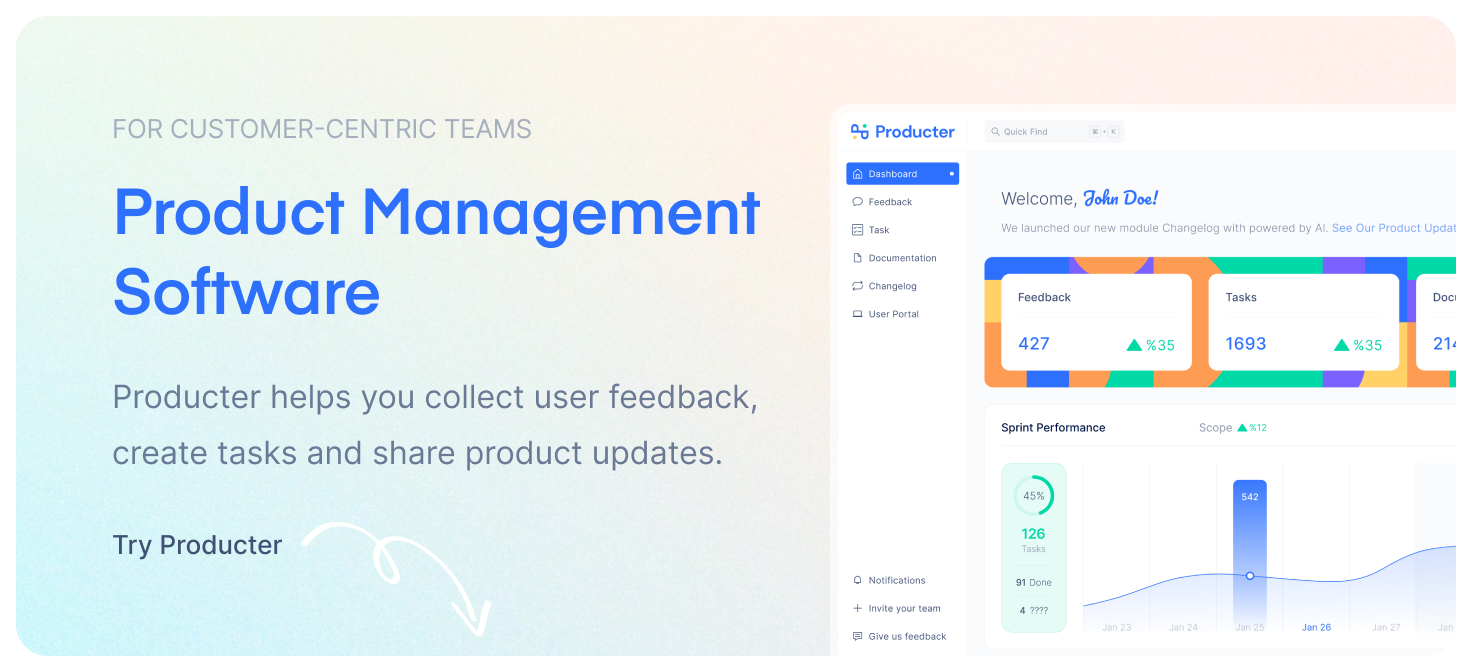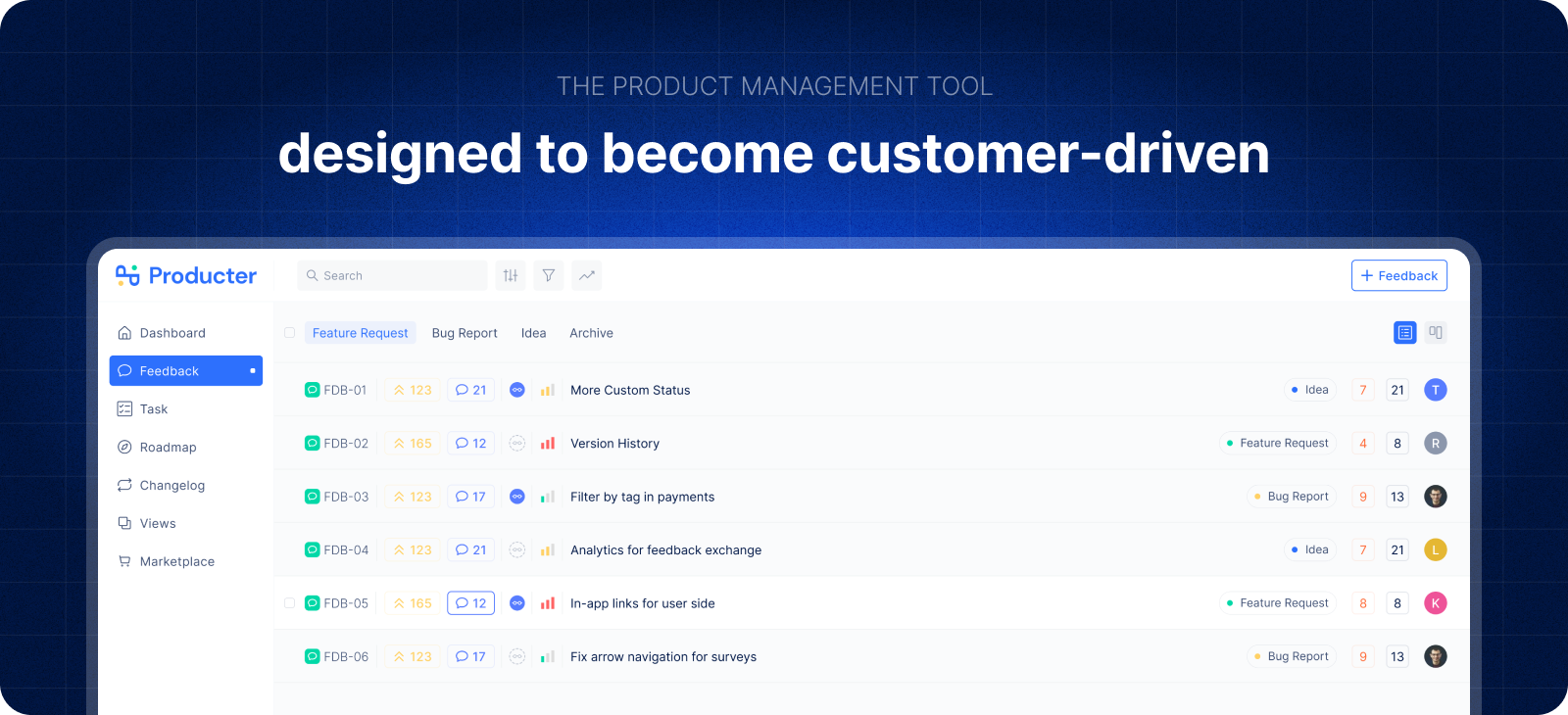See a need, fill a need. That’s how product managers roll.
You want your product to solve more problems. You keep adding new features your users are asking for. You end up with too many features.
Your product-bloating features may seem essential at the beginning, but turn out to be unnecessary in the long run. Who knew too much of a good thing can be bad?

What is feature bloat?
Feature bloat, also known as feature creep, happens when you add excessive features to a product that makes it overly complicated and difficult to use. Users may get confused by the complexity of new features or they may not even use them because they are unnecessary. This will result in confusion regarding your product and its basic function.
In this article, we will give you five tips to help you avoid feature bloat and save you from the crushing weight of unnecessary features.
Ask validating questions on feature requests
New feature requests come every day, but that doesn’t mean you should say “yes” to all of them.
You should always ask validating questions about the quality and significance of customer feedback before acting on it. Focus on understanding the underlying problem first, instead of building new features.
Try to understand what they want to achieve with the request. Ask these questions:
- What problem are we trying to solve?
- Why do we need this functionality?
- Is it really necessary? What value does it bring to the user?
- What percentage of users will this feature positively impact?,
- Does the feature request align with our company’s core purpose?
You should understand that what your customers want is not always what they need.
Only say “yes” to the ones that will bring real value to you, your team and your customers. More isn’t necessarily better. Be more selective. Keep it simple. When you fight against the feature bloat, you should always choose quality before quantity.
Customers will always demand new features, it is your job to decide which features your product and customers actually need and bring value in the long run.

Prioritize usability
Product managers know that their product is only successful if the customer can use it effectively. When you prioritize usability, you get to build the product around what customers want and use within the product.
Look at your Minimum Viable Product (MVP). Introducing a new product to the market with just enough features to catch customer attention is called Minimum Viable Product. Sometimes product managers get so excited about adding new features that they forget about the product’s basic function. Remember the basic need your product seeks to serve.
Your product’s basic function should be enhanced by features, but it should not depend on them. Data testing that evaluates the feature’s usability and customer experience surveys are some of the ways to make sure your team knows what your customers want and what they don’t. If you don’t regularly gather customer feedback and consider the usage data, you may not even realize that feature bloat has crept in.
Producter helps product and customer-facing teams to make informed decisions backed by customer feedback. Decide what to build next around the customer insight and the product strategy with Producter.
Consider the real cost before adding that feature
How much will it cost to develop and implement the new feature? What will be the potential expenses related to fixing issues in the future? And what about the cost of complexity? When you add a new feature, your complexity goes up.
Before incorporating a new feature into a product, it is vital to think through what the actual costs for this feature will be over its lifetime.
Stay focused on your product vision
When you have a clear product vision and strategy, you will build a successful roadmap. Your product team will know whether a new feature request is really needed or is nice to have. By setting clear objectives, your team will avoid feature bloat early on and stay focused on what matters most.
A PM’s biggest challenge is to find the right balance between features and functionality while keeping the focus on the product vision. While making product decisions, product vision should be your north star. Saying “no” to requests conflicting with the product vision might be hard, but it’s an essential part of protecting the product.
Remove poor product features
Let’s face it. Taking features out is harder than adding features in.
Some of the features you add will turn out to be flops. You should kill them before they kill your product. When you don’t remove the unnecessary features, you end up churning customers and frustrating your engineering and product teams.
You may think the resources spent adding that feature is a sunk cost. Dharmesh Shah thinks that is a big fallacy. He says, “Most of the cost for a feature is not in the initial development but in the long-tail of time after it is launched.”
You should decide on “a minimum bar of usage/value” that every feature must pass in order to remain as a feature. If the new feature doesn’t hit that bar in time, take a deep breath and cut it. Cue the music. (“Let it go” from Frozen starts to play.)
Key Takeaways
- Adding excessive features to your product, also known as feature bloat, harms functionality and user experience.
- Use the data to understand what your users are actually doing with the products you build.
- Ask questions about the quality of customer feedback before acting on it.
- Don’t forget the basic need your product seeks to serve.
- Say “no” to the requests conflicting with the product vision.
- Kill poor product features before they kill your product.
- Simplicity rules. Choose quality before quantity.
Take these five actions to avoid feature bloat in the future:
- Ask validating questions on feature requests
- Prioritize usability
- Consider the real cost before adding that feature
- Stay focused on your product vision
- Remove poor product features
Producter is a product management tool designed to become customer-driven.
It helps you collect feedback, manage tasks, sharing product updates, creating product docs, and tracking roadmap.

Written by Yagmur Vatangul Colak





